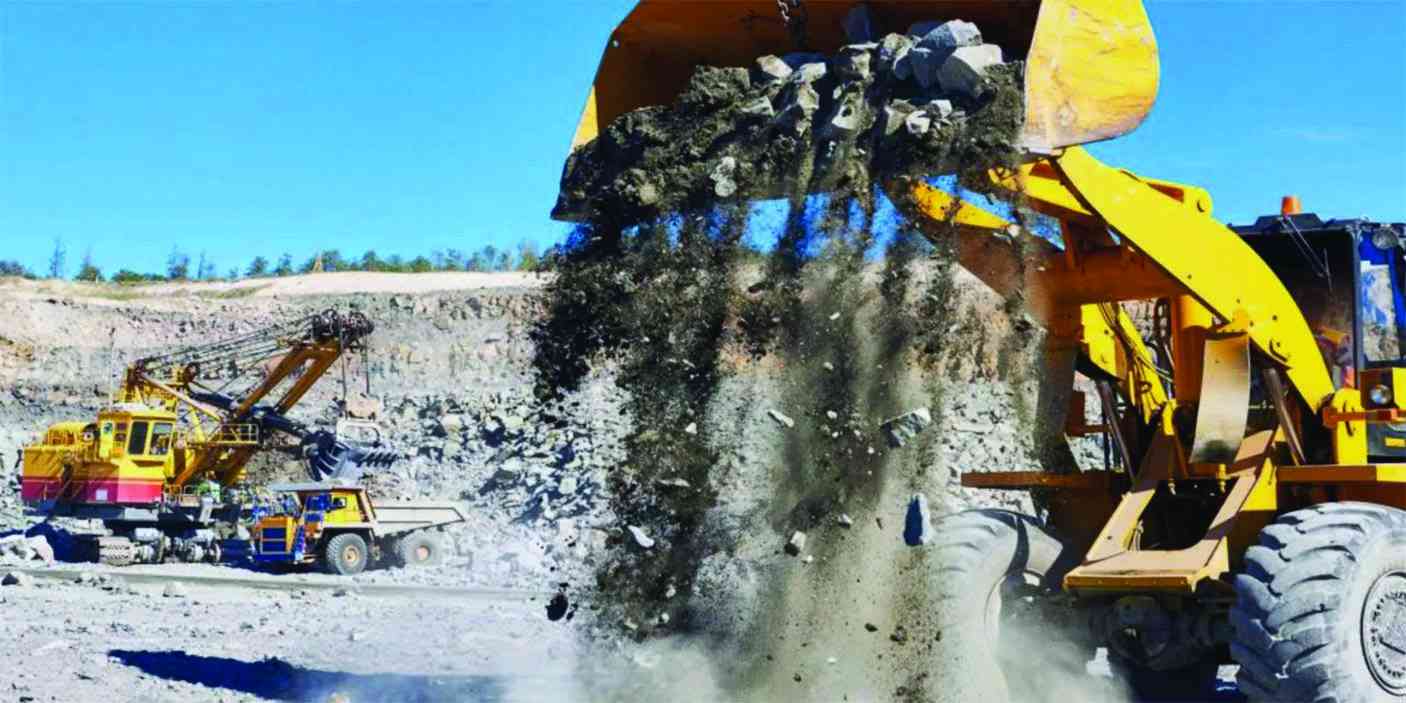..plenty of new lithium mines coming soon, Zimbabwe does not account for much today but the Chinese are going to be relying on Zimbabwe for lithium like they will on Simandou for iron ore in the years ahead....Australia could well face competition for China imports of our lithium and iron ore from Africa.
..in a few years, our lithium mines would not amongst the largest operating ones in the world.
Zim set for ‘world’s next lithium valley status’
Local News
By Enos Denhere | 23h ago
Having outlawed the export of raw lithium earlier this year, the Zimbabwean government is hoping to encourage downstream infrastructure development and become a regional processing hub for lithium-ion batteries and other climate-friendly energy sources.
Zimbabwe has an important opportunity in lithium, creating room for becoming the world's lithium valley.
Dubbed "the World's Next Lithium Valley" in line with the worldwide move to cleaner energy, Zimbabwe also has a nascent lithium mining business and Africa's greatest lithium reserves.
Last July, a subsidiary of Chinese mining company Zhejiang Huayou Cobalt opened a US$300 million lithium processing facility with the potential to manufacture 4,5 million metric tonnes for export each year.
The country’s vast mineral resources – in particular iron and lithium – place it in a critical position in the global energy transition. With its large lithium deposits, some experts say it has the potential to meet up to 20% of the global demand for the light metal. However, in 2021 it produced only 1% of the world’s lithium and ranked sixth amongst the leading lithium-producing countries after Australia (52% of global production), Chile (25%), China (13%), Argentina (6%) and Brazil (1%). In 2021, Zimbabwe’s total output was 1,200 tonnes compared with Australia’s 55,400 tonnes. In 2022, it had the planet’s seventh biggest proven lithium reserves, estimated at 310,000 tonnes (Chile had the world’s biggest reserves at 9.3mn tonnes).
Given how tight lithium supply chains are globally, lithium exports could potentially help Zimbabwe escape its status as a pariah state, largely isolated by Western politicians and investors. But a big scramble is under way for the country’s critical minerals and at the moment China is winning it.
China has announced a massive $2.79bn investment in its lithium mining operations in Zimbabwe. In September 2023, there were more than seven lithium exploration and mining projects at different development stages, with Chinese companies leading the race.
In February 2022, Sinomine Resource Group, a Chinese mining company, acquired the country’s only lithium producer, the Bikita Lithium Mine, from African Metals Management Services and Southern African Metals and Minerals, for $180mn. The mine is located in Masvingo province in the southern part of the country, roughly 300 km south of the capital city of Harare, and reportedly holds the world’s largest-known lithium deposit at 10.8mn tonnes of lithium ore grading 1.4% lithium, resulting in 0.15m tonnes of lithium oxide.
Sinomine plans to invest $200mn to expand the mine’s production capacity by another 2m tonnes per year (tpy). The investment will also allow it to produce lithium spodumene.
In 2022, Zhejiang Huayou, the world’s biggest producer of cobalt, acquired controlling rights to the Arcadia mine from Prospect Resources, an Australian mining company, for $422mn. Zhejiang has commissioned a $300mn processing plant at Arcadia. The mine has capacity to process 4.5m tpy of lithium ore and produce 450,000 tpy of concentrate.
In 2023, there was also speculation that China Natural Resources, Feishang Group and Top Pacific (China) would jointly acquire a Zimbabwean lithium mine for around $1.75bn. By March 2024 this investment had still not happened.
One of the few major projects that is not Chinese owned is the Zulu lithium and tantalum project, Zimbabwe’s largest undeveloped lithium-bearing site. It consists of 14 mineral claims covering a surface area of 3.5 sq km, which are prospective for lithium and tantalum mineralisation. Owned by Premier African Minerals, the strategic metals and minerals developer listed on the London Stock Exchange, the project will explore an inferred lithium carbonate equivalent resource of 526,000 tonnes, grading 1.06% lithium oxide. It has 107,000 tonnes of lithium in the inferred and indicated categories as well as 1,000 tonnes of tantalum (pentoxide).
The mine is set to develop a 50,000 tpy pilot plant by research and development company Suzhou TA&A Ultra Clean Technology to the tune of $35mn.
Australian investors also still run the Step Aside Lithium Project, located 35 km from Harare (and around 8 km north of the Arcadia Lithium Mine Project). It comprises around one hundred hectares of claim within the Harare Greenstone Belt.
Having outlawed the export of raw lithium earlier this year, the Zimbabwean government is hoping to encourage downstream infrastructure development and become a regional processing hub for lithium-ion batteries and other climate-friendly energy sources.
President Emmerson Mnangagwa was once quoted saying: "Lithium is the mineral of the present and the future."
Its value addition will position our country as a growing and competitive player in the global lithium value chain”.
- Forums
- ASX - General
- Its Over
Its Over, page-20752
-
- There are more pages in this discussion • 2,915 more messages in this thread...
You’re viewing a single post only. To view the entire thread just sign in or Join Now (FREE)
Featured News
Featured News
The Watchlist
LPM
LITHIUM PLUS MINERALS LTD.
Simon Kidston, Non--Executive Director
Simon Kidston
Non--Executive Director
SPONSORED BY The Market Online










